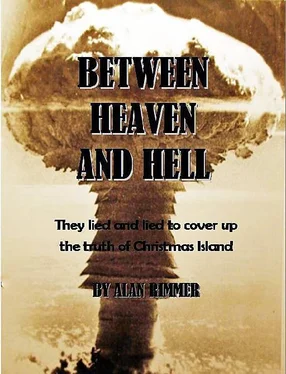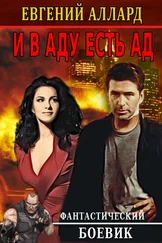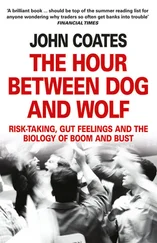It was the most serious accident in the history of nuclear power. A series of blunders by operators involved in safety checks led to the withdrawal of all 211 control rods from the reactor.
This in turn led to a sudden loss of water used to cool 1,661 uranium fuel assemblies that were set in pressure pipes surrounded by 1,700 tons of graphite blocks. This in turn caused a power surge creating a huge chemical explosion which blew the top off the reactor and spewed out vast quantities of radiation.
Conservative estimates put the energy release at around 50 million curies. This represents about 4,000 times as much activity as was released in the 1957 Windscale fire, and a million times as much as 1976 Three Mile Island accident in Pennsylvania caused by a partial meltdown in a nuclear reactor.
But because of mismanagement and a lack of monitoring equipment no-one on the site at first appeared to realise the wreck of reactor No 4 was leaking vast quantities of radioactive substances into the environment.
In the immediate aftermath about 150 people on site suffered from radiation sickness and 31 died of a variety of causes, including radiation, burns and falling masonry.
In the surrounding population most people were protected from the immediate effects because they were indoors (most in their beds), although many lived in wooden buildings which did not give as much protection as more conventional European dwellings. A woman, who was in her garden at the time, did experience symptoms of radiation sickness (sudden vomiting and extreme tiredness) within hours of the explosion.
More than 30 separate fires were caused by the explosions and there are many stories of heroic actions by the men who dealt with the immediate aftermath of the disaster.
Within five minutes the paramilitary fire brigade serving the station arrived on the scene. This was very soon reinforced by the Chernobyl town brigade who immediately attacked the fire on the roof of the turbine hall.
Without a thought for their own safety, and with no protective clothing, the fireman successfully prevented the fire from damaging unit No 3, which was separated from No 4 by just a wall.
There was no telling the consequences if that the wall had been breached. The main, and most dangerous, core fire was dealt with by 6.35. Six of the firemen were later to die of acute radiation sickness, and many others were severely affected.
In the early hours after the explosions, the health of those on site was the principle concern of the emergency authorities. Evacuation of the town of Pripyat didn’t begin until noon on April 27.
However, iodine preparations had been given to children at school on the morning of April 26, and to the rest of the town in the afternoon.
At first the well-paid company workers were stoical about what was happening. They calmly went about their business as usual. But by the late afternoon something akin to panic was beginning to set in.
Long queues formed outside emergency stations where the iodine was being distributed, and there were reports of people burning their mouths and even poisoning themselves through lack of instruction.
As the day wore on water carts began spraying the streets and stalls selling vegetables and other foodstuffs were removed.
The enormity of the disaster became more evident as night fell and the sky glowed red in the distance. At daybreak, the authorities finally ordered the evacuation of the town.
Food was left on tables and washing left on lines as more than 47,000 people began a mass exodus; within 18 hours the town was deserted.
In the days following all people within 10km of the plant had been evacuated, and by May 7, all within 30km, a total of 116,000 people from 186 settlements. The huge movement of people was swollen by the evacuation of tens of thousands of cattle as well as sundry other farm animals.
Meanwhile the shattered remains of No 4 reactor continued to burn. Tons of graphite ignited, while molten metal fissioned out of control, releasing dangerous isotopes that were sucked up into the smoke, adding to the radioactive soup above the plant.
Helicopters dumped huge loads of lead, sand and boron onto the plant in an unsuccessful attempt to staunch the conflagration. Water could not be used because it would have reacted with the graphite which would have created a huge cloud of deadly carbon monoxide.
The authorities realised the only option they had was to try to contain the fire until all the flammable material ran out. Meanwhile an enormous radioactive plume began to drift toward Pripyat◦— and beyond.
Of course, none of this was known to the outside world and at first the Soviets did their best to conceal it. The first the West knew of something untoward was when the Swedes detected abnormal levels of radioactivity outside their nuclear power plant at Forsmark.
The monitors revealed five times the normal radioactive emissions. Similar reports came from other parts of Sweden as well as Finland and Norway. Sweden after hours of searching confirmed the radiation was not coming from their country.European wind patterns soon revealed the source of the radiation pointed in one direction: the Soviet Union.
When the Swedes and other Scandinavian countries demanded an explanation from Moscow, they were initially met with denials and silence. But after several hours, an expressionless newscaster on Moscow television read a statement from the Council of Ministers, which was dour and uninformative even by Soviet standards.
In full it read: “An accident has taken place at the Chernobyl power station, and one of the reactors was damaged. Measures are being taken to eliminate the consequences of the accident. Those affected by it are being given assistance. A Government commission has been set up.”
The news made sensational headlines all over the world. The more Moscow tried to conceal what had happened, the more hungry the West came for information regarding it.
Stories of a huge movement of people and animals on a biblical scale were irresistible. Newspaper editors and broadcasters scrambled for news of this mighty exodus.
Scientists, doctors and nuclear experts where wheeled out to give their opinions on what had happened, while assorted, soothsayers, religious cranks and other doomsday merchants predicted the end of the world.
Despite the best efforts of the Moscow censors, more details of what had really happened began to emerge. Finally President Gorbachev, in the spirit of glasnost, decided to open the door and let the outside world in.
He issued a decree whereby nothing was to be hidden, nothing covered up. Film was released of the helicopters above the smoking reactor ruins desperately trying to damp down the flames and footage was released of queues of evacuees being monitored for radiation at the roadside. The Novosti News Agency was given full powers to release information to Western scientists and news organisations.
One story immediately stood out among many: the heroism of the fire-fighters who had doomed themselves to certain death by entering the nuclear maelstrom without a thought for their own safety.
And one man in particular was hailed the “hero of Chernobyl”. He was Lieutenant Colonel Leonid Telyatnikov, head of the Pripyat fire brigade who was one of the first on the scene.
According to Novosti it all began for Telyatnikov at exactly 1.32am when he received a telephone call telling him there was a fire at the nuclear power plant.
He immediately dressed and rushed to his car. Driving toward the plant he had to weave round fiery debris that littered the road. As he got closer to the plant he saw a bluish glow from the remains of what had been reactor No 4.
He realised this was no ordinary situation. Telyatnikov knew he and the rest of the fire fighters were “entering the gates of hell”, but he knew what had to be done. They were the only ones who could prevent the fire spreading to reactor No 3.
Читать дальше












